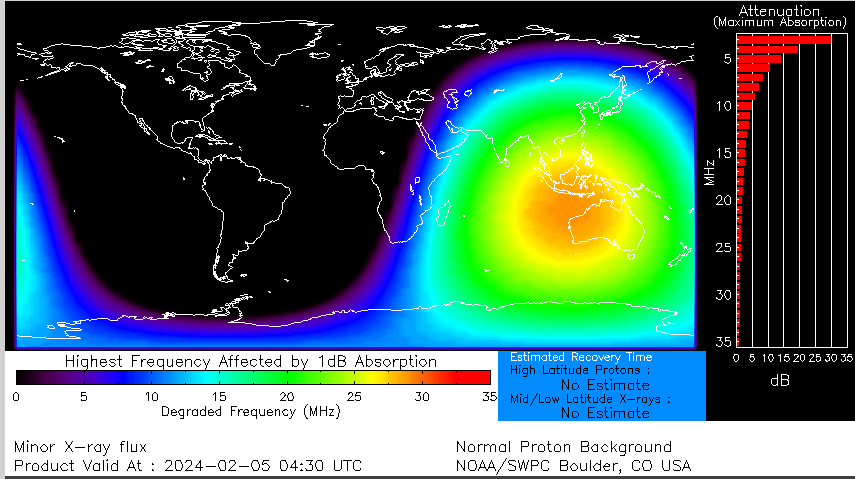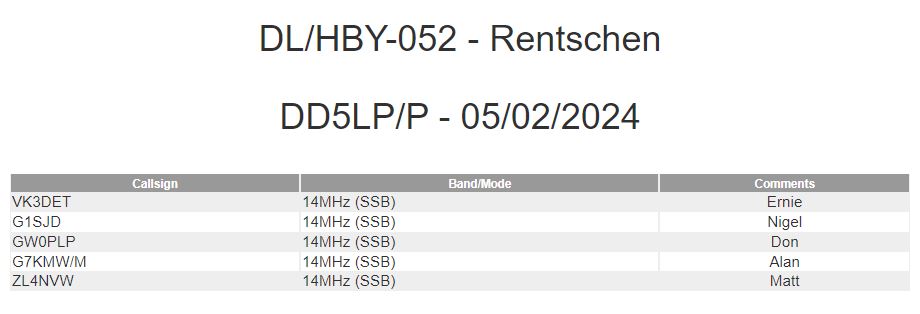Preparation:
With progress made on the 2-element wire beam and success at Peissenberg a week previously in the 10m only form, it was time to test the antenna this time with the trapped elements which should make the antenna a dual band antenna able to operate on the 10-metre and the 20-metre bands. This was not to be a test of the Bluetooth relay switching board but rather purely to test out the dual-band nature of the elements. Testing the full system with remote switchable direction will need to wait until another day.
After some days of rain showers, Monday had a good forecast with winds supposed to cease by 9 am and then the day to be sunny if not warm.
After a couple of tests in the muddy local field, the simple feed-point plate with the trapped elements had been trimmed to length, so everything was set for a test from a summit and so the surveyor’s tripod, the 7-metre mast, the antenna analyser and the antenna components were all loaded in the car on Sunday evening along with my 40-litre rucksack containing radio, battery and several antennas and masts, ready for an early start on Monday morning.
The chosen summit “Rentschen” is a plateau and as such a good summit for antenna testing with lots of space and few obstructions. This is a summit that is both in the HEMA and SOTA schemes and so is a “twofer” as POTA activators would say.
The Activation
The trip down was uneventful and I arrived at my usual car parking spot at around 8:15 am local time with my plan to be on the air before 9 am to catch the 20m long path into VK (I had set up a sked with Ernie VK3DET) and then to try the antenna also on 10 metres.
I chose a spot not far from the trig-point stone and I unpacked the mast, tripod and antenna first. These went up well, in the same way as I had installed them on the local field for the earlier tests and trimming. The four wires go out at 90° to each other and because of the combined length of the element and its cord extender (also acting as the guy cords for the mast), form a 56° angle with the vertical mast (the mast is a 7 metre mast but with the top section removed so that the feedpoint board sits at 5 metres above ground level).
Before unpacking the radio, I attached the antenna analyser to make sure that all still seemed OK with the antenna – it did. Then the Xiegu G90, headphones, battery and log book were unpacked and laid on my painter’s thick plastic sheet on the ground.
After sending a short Internet message to Ernie and agreeing on a 20m frequency that was free at both ends, I called Ernie and there he was – armchair copy, solid signal! I had the antenna “aimed” long-path (West from me) for this contact. When I needed to move to 10m, it would need to point short-path (East from me) so, rather than going straight on to 10m (a bad decision as it turned out), I decided to work more chasers (HEMA & SOTA) on 20m first.
In the middle of the SOTA callers on 20m, Matt ZL4NVW from Otago on the South Island of New Zealand called in. This suggests that 20m would have still been good for contacts into VK for another hour or so at least.
Another surprise contact was Alan G7KMW actually mobile while heading into work in the midlands of the UK. An easy copy so I think the antenna is definitely working.
When I decided to switch to 10m it was getting close to 0900 UTC and after dropping the antenna, turning the feed-point board 180° so that the beam would be pointing short-path to VK and raising it again, Ernie VK2DET and I tried for a 10m contact but if I hadn’t known he was calling I would have mistaken it for just part of the noise. The signal was so weak that there was no chance of Ernie hearing me (but I did try). What was strange was that two VK2 stations VK2CPC and VK2GM were both booming great 59 signals on 10m. Initially, I had thought my antenna wasn’t working on 10m but later I found it was most likely a propagation problem with an X-ray flare hitting the Ionosphere over Australia and pushing the MUF down over VKs 3,5,6 & 8 but not affecting VK2.

I only got one contact on 10 metres and that was off the side of the beam with Mario in Munich.
The next test will be to fit the Bluetooth-switched top board, to see if I can hear any difference in signal strengths as I “rotate” the static antenna electrically. I also want to see if I can support the mast with just a ground peg rather than using the surveyor’s tripod. On Rentschen at the start of the activation, there were only very light winds but when I went QRT, they had increased to a level where I may have had issues putting the antenna up so I had timed it right in that respect.
Photos:
Equipment taken:
- Mountaintop travelling 40-litre rucksack.
- Xiegu G90 radio.
- Surveyor’s tripod.
- 7 metre fibreglass mast.
- 10/20-metre band 2-element trapped wire beam.
- RigExpert AA-30 Antenna Analyser.
- Komunica Power HF-Pro2-PLUS-T loaded vertical antenna and tripod (not used)
- Lamdahalbe 5m mini-mast and new metal base peg (not used).
- SotaBeams linked dipole (not used).
- 4 Ah Eremit LifePO4 battery.
- 4 Ah LiHV battery(not used).
- Painter’s thick plastic sheet.
- Gardener’s kneeling pad.
- Lightweight headphones.
- Smartphone for SOTA/HEMA spotting.
Log:
HEMA
SOTA
CONTACTS MAP
Conclusions:
-
The antenna worked well on 20 metres. The problem with getting through on 10 metres to VK3 was later found to be an X-ray flare hitting the atmosphere over part of Australia, explaining why VK2 and JAs were getting through but not VK3. Others in Europe experienced similar problems.
-
Once the band is open and DX stations are coming in, the “search & pounce” approach can be forgotten as there are too many high-powered stations with large beam antennas that believe it is their right to get in contact with the DX station and if they hear someone else calling ahead of them, they repeat their call after the portable station finishes to make sure that if the DX station goes back to the portable station, he/she can no longer hear the DX station because of the DQRM they are causing. Hardly in the spirit of ham radio!
73 ’til the next summit.




You must be logged in to post a comment.